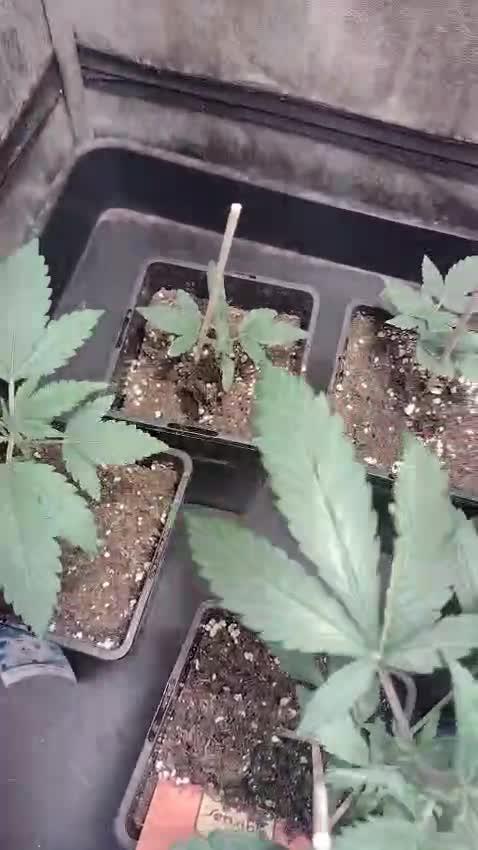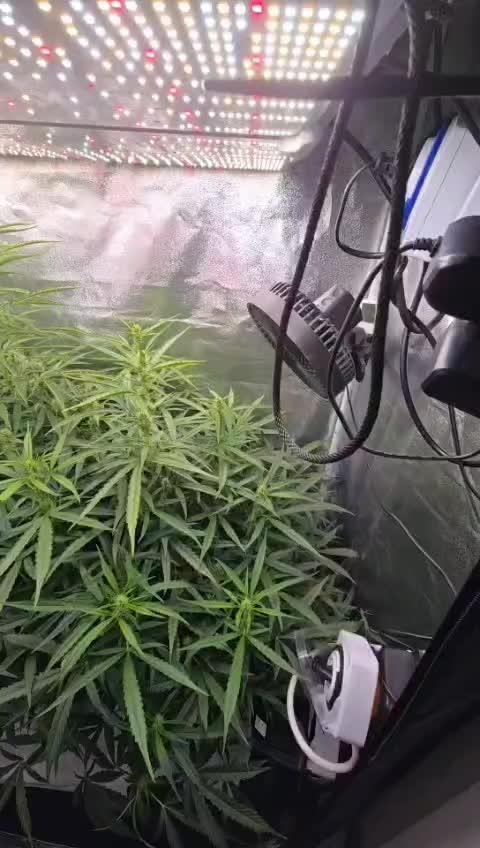The Grow Awards 2026 🏆 























Likes
Comments
Share


@Kider196nyc
Follow
ac infinity germination dome with heat mat and led lights. Seeds planted into solo cups
Likes
5
Share


@Nune2021
Follow
happy Halloween 🎃 🎃🎃zusammen !! Die Pflanze macht sich gut aber ist nicht mehr viel in der hohe gewachsen und fängt schon an zu blühen sieht ganz lustig aus die topf combo !! die Pflanze ist vielleicht 25 cm groß also ein Zwerg
Likes
10
Share


@RandomStreetMerchant
Follow
Hello, today I defoliated a good bit on both MXOP opened all those bud sights to get ‘em to be nice nugs in a few weeks here
This cultivar is amazingly hardy and can take quite a bit of punishment.
The clippers were caked in some trim hash crazy considering I don’t think I took that much off
Until next time growmies good health too all you ✌️ 07/31/23
Likes
15
Share


@Drgreenthumb627
Follow
day 14 flower and those buds are just starting to peak out! the plant is happy and healthy :)
Processing
Likes
84
Share


@Beans
Follow
Leaf cheated death 1 more time. Went outta town and my plant sitter flaked. Came home to a wilted almost dead 1 leaf and hadn't even been in the flower tent for a whole week. Seems to be ok now. As far as living or dying. Probably completely fucked my yield I'm imagining. So many dead leaves. That's why I hadn't updated. He didnt want u guys to see him like that and I didnt wanna waste the time if he didnt make it.
Likes
31
Share


@OutForReal
Follow
Day 134 [19.01]
This weed is smelling like too much 🤔 my garden is surrounded by the smell of it 😱
The buds are hard like rocks and frosty like you want to 💎
Day 138 [23.01]
She is on the list of the plants that have been infested by gnats but she is solo the most resistant.
The last feeding with extra PK seems to have been too strong and the plant started to burn from nutrients excess or ph fluctuation so I've flushed heavily before the harvest.
Harvest F+61
Likes
50
Share


@DogDoctorOfficial
Follow
This Girl is on fire, all and everything about this one is just amazing, i mean the bag apele on her is retarded beautiful , and not just them looks, the smells are so intense that i am so glad that i have great carbon filters , yes i do use several ones in here and with girls like her one kind a needs it <3 <3 <3
as the week goes she evolves and her colors are getting darker and darker with i love, i mean i love white medicine covered in resin but dark one is a different look that i am also very in to it and all the beauty that comes with it <3 <3 <3
her close up shoots show that she is almost ready for harvest, meaning that provably some point this week mb beginning the next one i will harvest this beauty that for now is keeping her melon bobble gum sweet smell with some vanilla notes i think, she is special one that is for sure <3 <3 <3
Lets see how it all goes and how she tastes and smell after cured , but if she keeps this profile i will be a happy boy <3 <3 <3
oh added a short edited video from her, man is so much more complicated d¡to do them short than is them long hihihi hope you all enjoy them videos , i know i love making them <3 <3 <3
As always thank you all for stopping by and for supporting me on this journey, i am super passion about growing and fell blessed to have you all with me on this new journey <3 <3 <3
Genetics - Fast Buds Tester 2311
Ligth - LUMATEK ZEUS 465 COMPACT PRO
Food - APTUS HOLLAND
#aptus #aptusplanttech #aptusgang #aptusfamily #aptustrueplantscience #inbalancewithnature #trueplantscience #fastbuds #dogdoctorofficial #growerslove
With true love comes happiness <3 <3 <3 Always believe in your self and always do things expecting nothing and with an open heart , be a giver and the universe will give back to you in ways you could not even imagine so <3 <3 <3
All info and full product details can be find in can find @
https://2fast4buds.com/ wen released
https://aptus-holland.com/
https://autopot.co.uk/
https://lumatek-lighting.com/
<3 <3 <3 Growers love to you all <3 <3 <3
Likes
2
Share


@nickeri
Follow
9.7.2k24✅ 💚 Flowering 🌸👌
Nutri:
Plagron Alga Bloom = 4 ml/l
Plagron PK 13-14 = 1,5 ml/l
Plagron Sugar Royal = 1 ml/l
🌹🌹🌹
Fan adjusted and large leaves torn off 🌿
13.7.2k24 + Biobizz Alg-a-Mic = 4 ml/l
Likes
6
Share


@Abuelito
Follow
Had to leave out of town for 8 days. My girls suffered both heat stroke and dehydration. I fed them and saturated the fabric pots. I also turned the dehumidifier off for the next 12 hours since the rain has slowed, for now. It doesn't look like the grew much this week. I'm afraid this is going to make the final weight significantly less than it would have been.
Likes
36
Share


@BrigadeDesTerps
Follow
Pour l’instant la Frosty purple freak a une bonne croissance, les changements de température en belgique n’ont pas l’air de lui posé problème, les feuille sont saines , croissance visible quand tu repasse le lendemain, les limaces sont encore présentes mais ne s’attaque plus au plantes saines, mise à part la vigne à kiwi qui doit être le saint graal de ses bestiole sinon à part ça plus de problème à déplorer
Likes
28
Share


@OrganicPower
Follow
Week 8 flower and the Sour Diesel is still fattening up and looks like about 2 weeks to go. Going to swell good I think. Lots of frost and getting thick. Turned the lights down now to 50% and they seem to be happy with that. Still just water through the drip and hand water once a week. Gnats suck and need to take care of them before next grow and do a better job moving forward. These TSW 2000’s from Mars Hydro are awesome and with two of them side by side are more than enough for this space. Blimburn Sour Diesel are turning out really good and smell like gas and are strong on the nose! Thanks for the view
Likes
459
Share


@Ju_Bps
Follow
Hello my friends 👨🌾👩🌾,
Week was good, The plants are happy in the new pot.
I vaporise water on the leaves each days.
I continue my training for the scrog.
And did a big defoliation.
Good news!
The plants Start to have the same size.
Except the #3, but maybe with the stretch I'll can work on it.
I'll probably do a last defoliation next week.
💦 I give water each 2 or 3 days
0.95 l/plant
Water + Rhizo + Terra vega
Water + Rhizo + Cannazym
Water + Rhizo
PH@6
Lamp @90%
Probably one more last veg week, I've already removed 2 hours, I'm now 18/6, I'll removed again during the next week
Sorry my friends, in late, I've totally forgot to publish this week 🤪🤪💨💨
Thanks community for follow, likes, comments, always a pleasure 👩🌾👨🌾❤️🌲
See you next week 👊👊
Mars Hydro - TS 1000
https://www.mars-hydro.com/ts-1000-led-grow-light
Mars Hydro - FC3000
https://www.mars-hydro.com/fc-3000-samsung-lm301b-led-grow-light
Mars Hydro - SP3000
https://www.mars-hydro.com/sp-3000-samsung-lm301b-greenhouse-led-grow-light
The High Chameleon - Vannila T
https://www.thehighchameleon.com/shop/vanilla-t-5



































